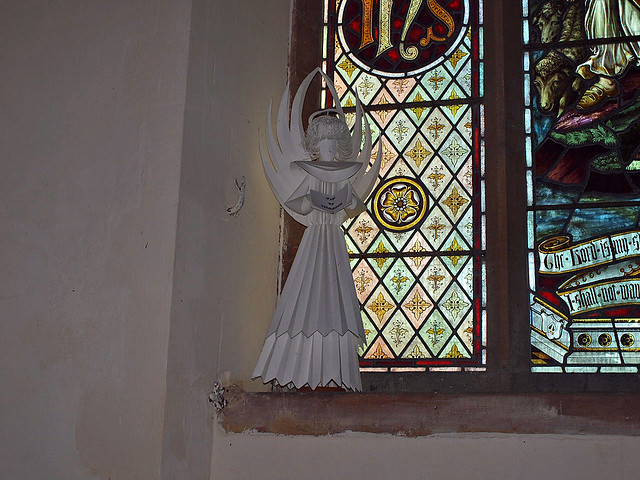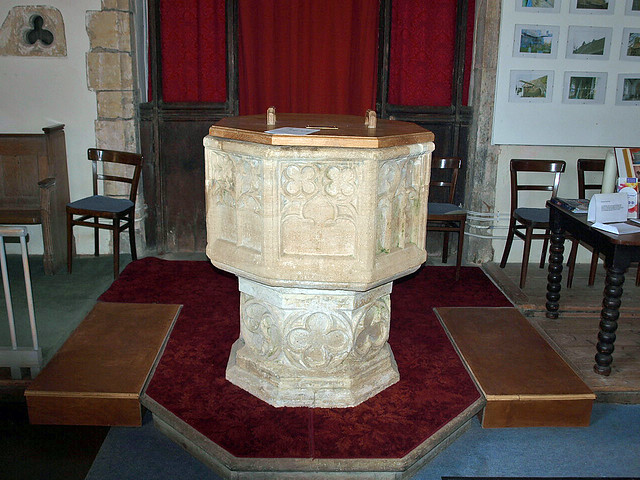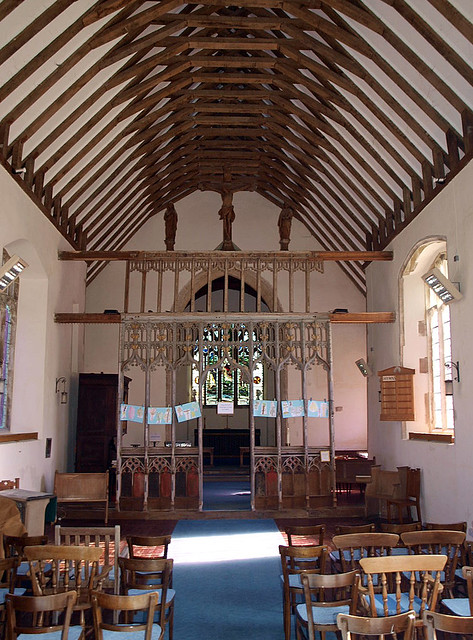* I found it locked but as I was about to leave a keyholder, or perhaps the keyholder, arrived to clean and prepare for the primary school's harvest festival later that day. Apparently they had had a rehearsal in the morning and had locked it when they left, which seems entirely reasonable assuming the teacher[s] had missed the sign stating that the building is kept open dawn to dusk [or some such].
ST PETER. Norman round tower with polygonal top. The tower staircase has an entry with a shouldered lintel and a little quatrefoil window into the nave. Nave and chancel; the nave thatched, with shallow transeptal N and S projections, only 3 ft 3 in. deep. Short chancel rebuilt in 1909. The N porch has a Dec entrance. The brick repairs to the porch are dated 1624. Most of the windows of the church are Perp. - FONT. Octagonal, Dec. Quatrefoils on the stern, tracery on the bowl. - SCREENS. Tall rood screen of ogee-headed one-light divisions. Perp tracery over. Also the parapet of the rood loft. This screen comes from Tottington. - Part of the screen of Rockland is under the tower. This also has one-light ogee-headed divisions. - PULPIT. Jacobean. Also from Tottington. - BENCHES. With traceried ends, poppy-heads, and animals on the arm-rests. From Tottington too. - PLATE. Elizabethan Chalice with bowl inscribed 1701; Paten inscribed 1703.
ROCKLAND ST PETER. Neighbour of Rockland All Saints, it has a pretty group of farm and red-roofed barns and a small church with a round tower and a thatched roof. The Normans raised the tower, and the 15th-century builders gave it the octagonal top. Most of the windows are of their time, but some are a century earlier. The brick and flint porch, with a stone tablet in the gable and the date 1624, has a stout medieval arch, and across the lancet arch of the tower is part of a 15th-century screen. The chancel, once in ruins, has been made new. The best thing inside is the big medieval font, with varied tracery adorning its bowl.



No comments:
Post a Comment